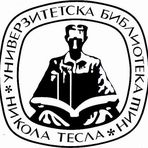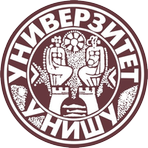Title
Istraživanje temperaturskog polja u reznom alatu pri obradi na strugu na suvo sa hlađenjem reznog alata sistemom na bazi termoelektričnog modula : doktorska disertacija
Creator
Nikolić, Radovan H.
Copyright date
2015
Object Links
Select license
Autorstvo-Nekomercijalno-Bez prerade 3.0 Srbija (CC BY-NC-ND 3.0)
License description
Dozvoljavate samo preuzimanje i distribuciju dela, ako/dok se pravilno naznačava ime autora, bez ikakvih promena dela i bez prava komercijalnog korišćenja dela. Ova licenca je najstroža CC licenca. Osnovni opis Licence: http://creativecommons.org/licenses/by-nc-nd/3.0/rs/deed.sr_LATN. Sadržaj ugovora u celini: http://creativecommons.org/licenses/by-nc-nd/3.0/rs/legalcode.sr-Latn
Language
Serbian
Cobiss-ID
Theses Type
PhD thesis
Other responsibilities
mentor
Radovanović, Miroslav
član komisije
Nedić, Bogdan 1959-
član komisije
Manić, Miodrag 1957-
član komisije
Vukić, Mića 1965-
član komisije
Janković, Predrag
Academic Expertise
Prirodno-matematičke nauke
Academic Title
-
University
Univerzitet u Nišu
Faculty
Mašinski fakultet
Group
Katedra za proizvodno-informacione tehnologije i menadžment
Title translated
RESEARCH OF THE TEMPERATURE
FIELD IN CUTTING TOOLS WHEN DRY
CUTTING ON A LATHE WITH A
THERMOELECTRIC MODULE COOLING
SYSTEM
Publisher
Niš : [R. H. Nikolić]
Format
PDF/A (191 list)
description
Upor. nasl. str. na engl. jez.
Umnoženo za odbranu.
Univerzitet u Nišu, Mašinski fakultet, 2015.
Rezime ; Abstract.
Bibliografija: listovi [1-7]
description
Production Technology,
Thermodynamics of cutting and Thermoelectrics
Abstract (en)
The subject of research of this doctoral dissertation is to explore the possibilities of the
implementation of systems based on a thermoelectric module (TEM) for cooling the cutting
tool. This cooling becomes significant when it is not possible to use conventional coolants
and lubricants (CLM). Starting from existing mathematical models for the calculation of the
temperature field of the cutting tool, a mathematical model is developed that takes into
account the cooling based on the TEM. The use of the finite element method (FEM)
determine temperature field when finishing grinding dry in the cooling conditions based on
the TEM. The Software package, PAK-T, is used for the calculations and was developed at
the Department of Applied Mechanics, Faculty of Engineering Sciences in Kragujevac. The
system for cooling the cutting tool based on the TEM was realized under laboratory
conditions on a prototype model, which consists of a cutting tool and a thermoelectric
module. Verification of the obtained results was carried out on the basis of a mathematical
model by experimental research of the temperature field of the cutting tool in terms of
cooling based on a TEM.
The dissertation text is composed of eight chapters.
The first gives an overview of previous research in the area of monitoring and modeling of
temperature fields in the cutting process. As the focus of this dissertation is the cooling of the
cutting tool based on a TEM in dry processing, the overview of research in this field is
provided in this chapter.
The subsequent section presents the theoretical considerations of the cutting process, which
are related to temperature occurrences in the cutting zone. Starting from the basic models of
chip formation, the basic parameters of the geometry and mechanics of cutting are defined as
are their relationships and calculations. Determination of the characteristic parameters is also
shown as they are required for the calculation of the power of the heat sources.
In the third chapter, with previous theoretical considerations in mind, the heat sources and
sinks in the machining system of cutting are analyzed. Starting from existing models,
accounting for new knowledge with respect to the convection and conduction of heat, and
bearing in mind the limitations and capabilities of the existing software, a mathematical
model is developed for calculating the temperature field of the cutting tool when dry
processed without cooling. This model is the basis for further upgrades and calculations of
temperature fields in conditions of cooling of the cutting tool based on TEM in processing of
dry scraping.
The fourth chapter gives the basics of cooling based on the ТЕМ. Starting from the essence of
thermoelectric occurrences, the thermoelectric processes are explained. Considering the basic
thermocouple, the basic equations for calculating are derived. The thermoelectric module is
defined, and the equations derived for thermocouple are applied to the ТЕМ. Through
detailed analysis of the work of the TEM, the heat flux is defined as that which draws module
from the object being cooling. This equation is the boundary condition in the mathematical
model.
Starting from the basic model, the fifth chapter develops a mathematical model for the
calculation of the temperature field of the cutting tool in processing by dry grinding with
cooling using a ТЕМ. The base model is revised by taking into account modern knowledge
about convection and heat conductivity and by adding a boundary condition representing a
heat sink at the place of the ТЕМ.
Тhe sixth, seventh and eighth chapter provides an overview of the results obtained, a
description of the experimental equipment used for measuring the value of the temperature
field, the arrangement of measuring points on the cutting tool, and other conditions for
conducting an experiment. Described in detail is the construction of a prototype model of the
cooling system of the cutting tool based on a thermoelectric module (TEM) as are other
conditions for conducting an experiment. Finally, a comparative analysis is carried out; a
detailed overview of the results obtained from the mathematical model and experimental data
from the prototype is performed.
The scientific contributes of the doctoral dissertation are as follows:
Development of new systems for cooling the cutting tool in conditions when it is not
possible to use conventional CLM,
Development of a mathematical model for the calculation of the temperature field of a
cutting tool cooled by a system based on a TEM,
Mathematical model that can be applied for the calculation of temperature fields in
other cases when cooling systems of other objects are based on a TEM, for the known
intensity of heat sources,
Possibility of analyzing the impact of different modes of cooling on the temperature
of the cutting tool,
Selection of an optimal cooling mode for given workpiece materials and cutting tools,
applied processing conditions, and method of calculating temperatures of each of the
applied modes,
By cooling in this manner, the thermal effects on the cutting tool when processing dry
are avoided and lessened are their impact on the intensification of wear, thermal
deformation and accuracy,
It furthers current research in the field of thermoelectricity as well as possibilities of
its application in this field,
Encourages further work on research, development and application of the cooling
system based on TEM in the field of cutting tools.
Authors Key words
Temperatursko polje, rezni alat, toplotni izvori, toplotni ponori, termodinamika rezanja, elektrotermija, obrada na suvo, hlađenje, termoelektrični modul (TEM), metod konačnih elemenata (MKE), postojanost alata
Authors Key words
dry processing, cutting tool, heat sources, heat sinks, temperature field, cooling,
thermoelectric module (TEM), finite element method (FEM), cutting tool lifetime
Type
Elektronska teza
Abstract (en)
The subject of research of this doctoral dissertation is to explore the possibilities of the
implementation of systems based on a thermoelectric module (TEM) for cooling the cutting
tool. This cooling becomes significant when it is not possible to use conventional coolants
and lubricants (CLM). Starting from existing mathematical models for the calculation of the
temperature field of the cutting tool, a mathematical model is developed that takes into
account the cooling based on the TEM. The use of the finite element method (FEM)
determine temperature field when finishing grinding dry in the cooling conditions based on
the TEM. The Software package, PAK-T, is used for the calculations and was developed at
the Department of Applied Mechanics, Faculty of Engineering Sciences in Kragujevac. The
system for cooling the cutting tool based on the TEM was realized under laboratory
conditions on a prototype model, which consists of a cutting tool and a thermoelectric
module. Verification of the obtained results was carried out on the basis of a mathematical
model by experimental research of the temperature field of the cutting tool in terms of
cooling based on a TEM.
The dissertation text is composed of eight chapters.
The first gives an overview of previous research in the area of monitoring and modeling of
temperature fields in the cutting process. As the focus of this dissertation is the cooling of the
cutting tool based on a TEM in dry processing, the overview of research in this field is
provided in this chapter.
The subsequent section presents the theoretical considerations of the cutting process, which
are related to temperature occurrences in the cutting zone. Starting from the basic models of
chip formation, the basic parameters of the geometry and mechanics of cutting are defined as
are their relationships and calculations. Determination of the characteristic parameters is also
shown as they are required for the calculation of the power of the heat sources.
In the third chapter, with previous theoretical considerations in mind, the heat sources and
sinks in the machining system of cutting are analyzed. Starting from existing models,
accounting for new knowledge with respect to the convection and conduction of heat, and
bearing in mind the limitations and capabilities of the existing software, a mathematical
model is developed for calculating the temperature field of the cutting tool when dry
processed without cooling. This model is the basis for further upgrades and calculations of
temperature fields in conditions of cooling of the cutting tool based on TEM in processing of
dry scraping.
The fourth chapter gives the basics of cooling based on the ТЕМ. Starting from the essence of
thermoelectric occurrences, the thermoelectric processes are explained. Considering the basic
thermocouple, the basic equations for calculating are derived. The thermoelectric module is
defined, and the equations derived for thermocouple are applied to the ТЕМ. Through
detailed analysis of the work of the TEM, the heat flux is defined as that which draws module
from the object being cooling. This equation is the boundary condition in the mathematical
model.
Starting from the basic model, the fifth chapter develops a mathematical model for the
calculation of the temperature field of the cutting tool in processing by dry grinding with
cooling using a ТЕМ. The base model is revised by taking into account modern knowledge
about convection and heat conductivity and by adding a boundary condition representing a
heat sink at the place of the ТЕМ.
Тhe sixth, seventh and eighth chapter provides an overview of the results obtained, a
description of the experimental equipment used for measuring the value of the temperature
field, the arrangement of measuring points on the cutting tool, and other conditions for
conducting an experiment. Described in detail is the construction of a prototype model of the
cooling system of the cutting tool based on a thermoelectric module (TEM) as are other
conditions for conducting an experiment. Finally, a comparative analysis is carried out; a
detailed overview of the results obtained from the mathematical model and experimental data
from the prototype is performed.
The scientific contributes of the doctoral dissertation are as follows:
Development of new systems for cooling the cutting tool in conditions when it is not
possible to use conventional CLM,
Development of a mathematical model for the calculation of the temperature field of a
cutting tool cooled by a system based on a TEM,
Mathematical model that can be applied for the calculation of temperature fields in
other cases when cooling systems of other objects are based on a TEM, for the known
intensity of heat sources,
Possibility of analyzing the impact of different modes of cooling on the temperature
of the cutting tool,
Selection of an optimal cooling mode for given workpiece materials and cutting tools,
applied processing conditions, and method of calculating temperatures of each of the
applied modes,
By cooling in this manner, the thermal effects on the cutting tool when processing dry
are avoided and lessened are their impact on the intensification of wear, thermal
deformation and accuracy,
It furthers current research in the field of thermoelectricity as well as possibilities of
its application in this field,
Encourages further work on research, development and application of the cooling
system based on TEM in the field of cutting tools.
“Data exchange” service offers individual users metadata transfer in several different formats. Citation formats are offered for transfers in texts as for the transfer into internet pages. Citation formats include permanent links that guarantee access to cited sources. For use are commonly structured metadata schemes : Dublin Core xml and ETUB-MS xml, local adaptation of international ETD-MS scheme intended for use in academic documents.


